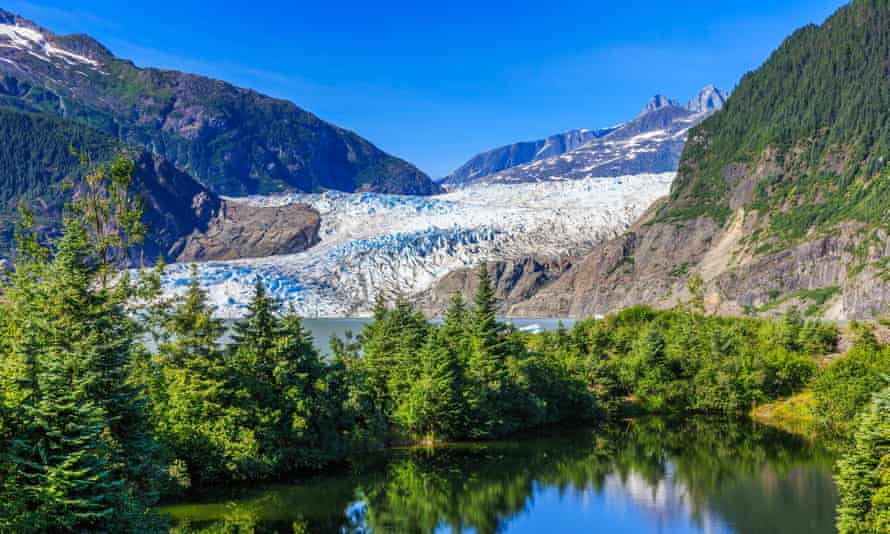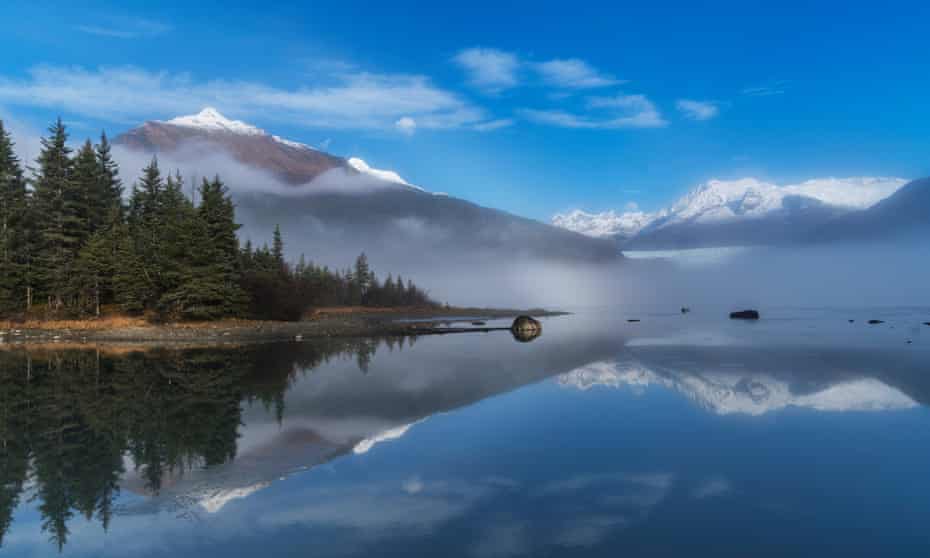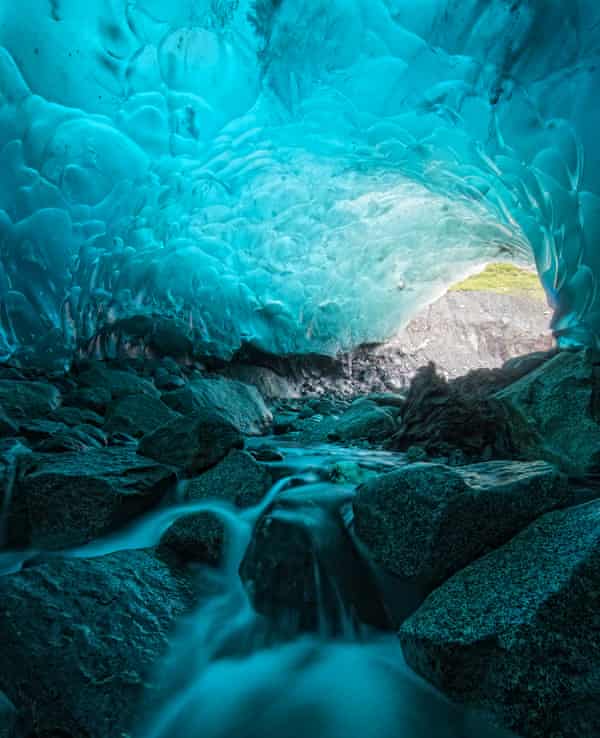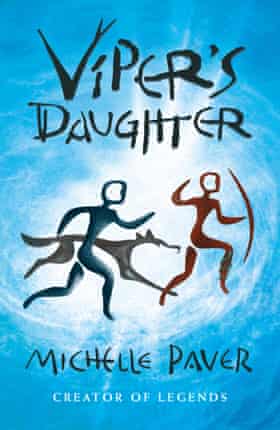We’d flown over the ice field on the approach to Juneau, and my spirits had soared. Ice was what I’d come for. I needed a giant ice cave for the book I was writing, and I’d arranged a guided hike to a glacier the following day.
I was on a month-long research trip for the latest of my Wolf Brother books, taking in Alaska’s Inside Passage and the remote Canadian islands of Haida Gwaii, where there’d be plenty of ice, even in early summer. When the plane landed, I was disconcerted to find the temperature around 30C. Tourists ambled around in T-shirts (I’d only brought one). Ravens – Juneau has lots – panted on rooftops with their wings half-spread to catch the breeze.
But from my room at the Goldbelt Hotel, I could see snow on the surrounding peaks, and I had a glorious view of the harbour, just across the road. While I was unpacking, a whale spouted and dived, right in front of my window.
I liked Juneau, Alaska’s state capital. It has an intriguing maze of narrow streets around the waterfront. Among the usual souvenir shops I found an excellent bookshop, Hearthside Books; and I spent hours in two fascinating museums, exploring Native American culture. Over the years, the First Nations of the Pacific Northwest have been a major inspiration for my stone age hunter-gatherers.

Next day the temperature had plummeted to a far more acceptable 14C: it was a misty, overcast morning, perfect for hiking. I was slightly apprehensive as I waited to join a guided hike outside the Twisted Fish cannery, because I much prefer hiking alone. If my companions turned out to be chatty, that could get in the way.
I needn’t have worried. There was only one other hiker, Ryan, 28, from Sacramento and blessedly taciturn. As was our guide, 26-year-old Adam: he was wholly focused on safety, which was fine by me.
After driving to the trailhead and tying our helmets and crampons to our daypacks, we embarked on the 90-minute hike to the glacier. Adam set a nice brisk pace, and to my delight we didn’t see another soul as we climbed through mossy, pine-scented forests. We passed a beaver-made pond, and scrambled over rocks slick with mist. Then we left the trees behind and there, towering over a jade-green lake, was the glacier. Its freezing breath raked my cheeks.

Every glacier I have ever got close to has been weird in its own way. Some make an otherworldly din, as if ice giants are hammering to get out. Others are more visibly unquiet, calving mountains of blue-white ice without warning into the sea. The flanks of the Mendenhall glacier were a glistening black, and beside a creek seeping from its underbelly we found something I’d never seen before: a sci-fi expanse of jelly-like, greenish-brown silt that shuddered when I pressed it with my boot, as if it was alive.
Detouring around this, we climbed on to the glacier itself. The ice was ferociously slippery, and so hard that my crampons simply bounced off it. Only when I was securely roped did I approach a moulin (a roughly circular shaft in the ice). Peering into that dizzying hole was unsettling. If the rope failed, I would be beyond help, swept to my death under the glacier … I scribbled a note. Maybe I could use that in the book.

And so, at last, to the ice cave: a yawning mouth of darkness carved by a torrent that thundered down from a nearby mountain. Adam hadn’t ventured inside it for a fortnight now, and I could see why: large rocks were tumbling from the slopes above the mouth, from which hung jagged curtains of ice just waiting to collapse.
The noise of the torrent was deafening, and at Adam’s shouted command we darted inside – into a freezing, echoing, hostile world of unearthly blue. Blue air, blue light, and, above my head, sculpted blue ice, in which whole boulders hung suspended. Rocks tilted underfoot as I crossed the torrent at a crouch. I hadn’t expected this pounding roar of water, this palpable sense of threat. I was sharply aware that above me were millions of tonnes of chaotically moving ice.
I got back to my hotel room feeling cold and exhilarated, fizzing with ideas. I wrote up my impressions from the blurred scribbles in my notebook. Then I wandered down to the waterfront.
A cruise ship had just left, and all was quiet. I chatted to a Native American family feeding the ravens from a paper bag of popcorn. They gave me the bag when they left, and as I fed the birds, a dog barked, and one of the ravens barked back. I’d forgotten that they’re such good mimics. Something else I could use in the book.

This is why I love research trips. It’s not only the big experiences like that ice cave; it’s the little unexpected details that spark an idea that makes the story come alive.
That trip was a while ago now and re-reading my notes before writing this piece has given me a pang, because since the pandemic struck, I haven’t been anywhere. I love ice, and I miss it. I know I’m lucky to live near woods, and I know things will change eventually and we’ll be able to travel again. But I’m greedy. I want icy peaks and vast, snowy forests. And glaciers.
Viper’s Daughter by Michelle Paver is out now (Zephyr, £7.43 at GuardianBookshop). Her next book, Skin Taker, is out in hardback on 1 April 2021 (£11.30 at the Guardian Bookshop)




